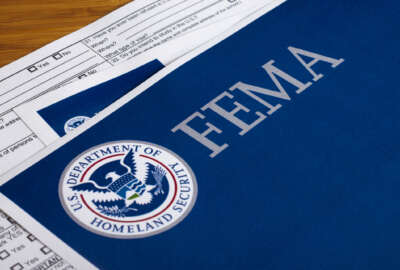
Plagued with harassment, staffing shortages, FEMA vows to invest more in its people
The Federal Emergency Management Agency's nominee for deputy director is encouraging FEMA to invest more in its people, as it staffs up for an upcoming hurricane...
One year after 2017’s historic hurricane season, the Federal Emergency Management Agency (FEMA) faces an uphill battle to properly staff up and train its employees in preparation for this year’s potential storms.
In looking back on its response to 2017’s disasters, FEMA says its workforce was well understaffed, under-trained and ill-prepared to respond at the start of last year’s hurricane season.
That’s due, in part, to a lack of investment in FEMA’s employees, said Peter Gaynor, the president’s nominee to be the agency’s deputy administrator.
“You have to make that investment,” he told the Senate Homeland Security and Governmental Affairs Committee during Wednesday’s nomination hearing. “When the plan falls apart or it doesn’t go as planned or something new happens, you entrust your employees or your team to get you across the finish line. That has been my focus. I put a lot more effort than I ever thought I would in screening and evaluating and selecting new employees to make sure they’re well-trained, make sure I invest in them after I hire them and make sure they understand what their role is. … Life has become much easier than it used to be, because I’ve invested in personnel up front.”
If confirmed, investing more time and effort into vetting, selecting and training FEMA employees will be a top priority for the agency’s new deputy administrator.
Senators are hopeful they can quickly confirm Gaynor, so his management and leadership experience will be available to FEMA during this year’s hurricane season.
With Hurricanes Harvey, Irma, Maria and the California wildfires, 2017 put an “unprecedented strain” on FEMA’s disaster workforce, according to the agency’s after-action report, which it released last month.
From Aug. 25 through Nov. 30 last year, 73 percent of FEMA’s response workforce was deployed to disaster-affected areas, the agency said. More than half of FEMA’s specialized response and recovery cadres were staffed at 25 percent or lower for 45 days or more.
Much of the staff FEMA did have were under-certified, according to the agency. FEMA expects about 80 percent of its workforce to be certified in disaster response and recovery, but the staff the agency deployed to last year’s disaster areas fell well below that target.

FEMA also relied on the Surge Capacity Force (SCF), a volunteer corps of federal employees from across government to deploy to disaster-affected areas. Acting DHS Secretary Elaine Duke expanded the Surge Capacity Force last September to include federal employees from all cabinet agencies. Previously, the SCF only included non-FEMA, DHS employees.
Roughly 2,740 employees from eight DHS components and 1,323 employees from 34 non-DHS agencies joined the Surge Capacity Force to respond to Hurricanes Harvey, Irma and Maria, according to FEMA’s report.
In total, 4,063 non-FEMA federal employees, more than three times the amount the agency surged for Hurricane Sandy, deployed to hurricane impacted areas.

“While the SCF met its intent of injecting staff into operations to perform work that required little
training, reports from field offices and headquarters indicated that opportunities exist for FEMA to
identify needed specialized skills from surge staff and match them with field needs,” the agency’s report reads. “Further, field interviews indicated that surge staff who have management positions in their home offices could have been better used to supplement leadership shortages.”
Reversing a culture of harassment and misconduct
Lack of investment in FEMA’s personnel is also a likely factor in the agency’s recent challenges with sexual harassment and employee misconduct, Gaynor said.
FEMA announced several changes last month after an internal investigation uncovered a series of sexual harassment and misconduct allegations against the agency’s former chief human capital officer, Corey Coleman.
The DHS inspector general had received nearly two dozen complaints about the former FEMA HR director dating back to 2013, Senate committee Ranking Member Claire McCaskill (D-Mo.) said during Wednesday’s nomination hearing.
“However, when the complaints were referred to FEMA by the inspector general’s office it’s unclear what, if anything, FEMA did about them,” McCaskill said.
“I know, Mr. Gaynor, you did not make this mess, but if confirmed, you’re responsible for cleaning it up,” she added.
FEMA’s investigation is ongoing with help from the DHS inspector general. The agency’s administrator, Brock Long, announced the creation of a new Office of Professional Responsibility to receive, follow up and resolve allegations of employee misconduct. A separate outside entity will review FEMA’s current practices for managing and dealing with misconduct and harassment.
Copyright © 2025 Federal News Network. All rights reserved. This website is not intended for users located within the European Economic Area.
Nicole Ogrysko is a reporter for Federal News Network focusing on the federal workforce and federal pay and benefits.
Follow @nogryskoWFED
Related Stories





